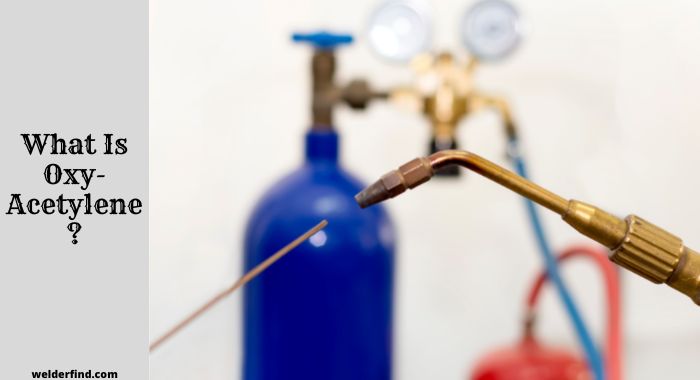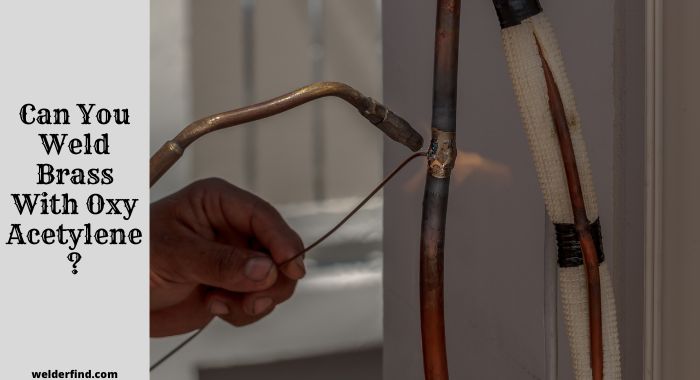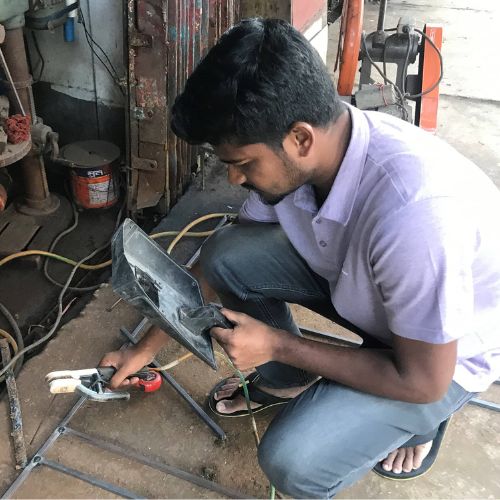Brass is mainly copper alloy, which consists of zinc and copper. In contrast, Oxy-Acetylene is primarily a gas welding process, whereas the burning process of oxygen and acetylene occurs.
In this article, we will walk you through the process of welding brass with Oxy-Acetylene. You will also learn how effective it is to weld brash with this gas welding.
What Is Oxy-Acetylene?

Oxy-acetylene is gas-type welding that utilizes acetylene and oxygen to produce an extremely hot flame. It is mainly used for braze welding and braze.
Moreover, you can use this welding approach for metal forming, preparation, and cutting blowpipes. Its intense or focused flame can help permanently join mild steel.
How Does Oxy Acetylene Welding Work?
When it comes to Oxy-acetylene welding, you need increased heat and temperature flame. Usually, you burn Oxy-acetylene along with unmixed oxygen to produce high heat.
Melting the primary item requires using a compatible filler rod with Oxy-acetylene. The flame will come via the contact tip of your welding torch.
A few pressurized steel cylinders are used to keep the unmixed oxygen and fuel gas. You can increase or decrease the gas pressure using cylinder regulators.
Their flexible hoses help to flow the gas. The torch allows you to control the direction of the flow. Using the welding rod with the primary item is necessary to join or cut your preferred item.
But, you can melt two metal items without using any filler rod. However, make sure the temperature level should be around 3,200 deg for practical welding.
What Are The Main Differences Between Oxy-Acetylene Welding And Other Welding Types?
The heating source of Oxy-Acetylene Welding is different from other welding types. You can reach as much as 6,000 ° F with oxy-acetylene welding.
Contrastly, when you use other welding types, such as Arc welding, reaching around 10,000 degrees Fahrenheit temperature is not hard. Welders use electricity as the heat source.
But, being extremely cautious is highly necessary when the temperature reaches the top level. Apart from thick plates, nowadays, welders use this welding approach for welding thin metal.
Can You Weld Brass with Oxy Acetylene?

Brass consists of alloys of copper. Tin and zinc are the primary alloying components. These alloy components have a significantly reduced melting point compared to original copper.
You can weld brass oxy acetylene if you don’t alter the original characteristics of the metal. Being extra cautious is crucial to avoid burning out the alloys.
Make sure there is no direct contact between the metal surface and the acetylene cone. The last section of the cone needs to be located at a slightly upper position than the metal surface.
How Do You Braze Brass With An Oxy Acetylene Torch?
When it comes to welding brass, Oxy-Acetylene is a popular choice. Store acetylene and oxygen in different containers and mix them appropriately during the welding session.
- Step 1
Appropriately knowing the zinc is crucial before you weld the brass. After all, copper has an incredibly higher melting point than zinc.
- Step 2
Making a perfect paste requires you to mix the flux with water correctly. Then, use this paste on the surface you want to weld.
- Step 3
It is best to use a compatible flux, such as braze-welding flux. Apart from dissolving any oxidation effectively, it will protect the fused material from averting oxidation.
- Step 4
Keep decreasing the acetylene flow until you notice a sturdy oxidizing flame. This will help produce enough coating to handle the base metal.
- Step 5
Having sufficient oxygen in the flame is crucial to avert zinc from touching the metal. However, avoid making too much fume. Otherwise, it will be tough to weld for the coating.
- Step 6
If you don’t concern about the color matching for two metal parts, use a professional-grade braze welding filler. You can choose R Cu–Zn–Sn or R Cu–Zn filler rods.
- Step 7
Compared to other metals, copper has a higher melting point. Hence, you don’t need to go for fusion welding. Instead, choosing to braze welding is entirely okay for low zinc brass.
- Step 8
Make sure the welding tip size is at least once larger than the steel tip you would use for this similar thickness.
What Are 3 Of The Most Common Problems That Happen When Oxy Acetylene Welding?
You may face different types of issues while Oxy-Acetylene welding. But, here are the three most common problems many welders face during Oxy-Acetylene welding.
Problem:1-Crackling Sounds
Usually, welders create bacon sounds while welding. But many welders experienced crackling sounds while Oxy-Acetylene welding. But this can happen if your wire speed is breakneck.
Problem:2- Hot Nozzle and Tube
Another common issue is the too-hot nozzle and tube. This can occur due to a backfire in the tip. You might be holding the tip too close, or there is a lack of acetylene in the cylinder.
Problem:3- Unwanted Sparks into the Object
Sometimes, you may see too many sparks flying into your welding object. This may occur if the welding voltage is too low. However, too small a Stick-out Wire can also cause this problem.
Which Of The Following Are Safety Practices In Oxy Acetylene Welding?
Like other welding processes, you want to follow some safety practices in Oxy-Acetylene welding. Here are a few expert-recommended tips.
- Avoid using any grease or oil to clean the connections.
- Don’t switch on the acetylene cylinder from a side.
- Make sure the high-pressure cylinder has caps while transporting it.
- Use a liquid leak detector to see leakage before lighting.
- Slowly open the oxygen cylinder as it has more than 2000 psi of pressure.
- Avoid turning on the acetylene cylinder. Don’t go more than half.
- Put back the regulator in its prior settings once you finish the welding.
- Cut the torch when it is needed to make the welding task convenient.
Last Words
When it comes to welding brass with Oxy-Acetylene, some strict guidelines must be followed to get a precise result. Brasses containing about 36 percent or more zinc are a better choice.
Apart from that, you want to consider electrochemical frequency modulation and partially melted regions while welding brass. This will help you to get a precise result.
